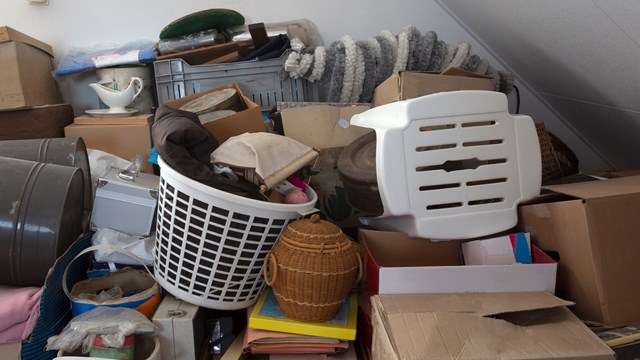While some co-op and condo communities have tried social media platforms like Facebook, Instagram, TikTok, or Twitter/X as ways to build community spirit and facilitate better communication between neighbors, management, and even the board, most have remained ‘old-school,’ sticking with newsletters, bulletin boards (both digital and cork) in the lobby or mail room, and email blasts to residents. With the ubiquity of social media these days, it may be worthwhile to ask why multifamily communities haven’t really embraced it.
If It’s Not Broken…
Stuart Halper, VP of Impact Realty, a co-op and condo management firm with offices in Manhattan, Queens, Long Island, and Westchester, attributes the absence of social media in residential communities to the tendency for Facebook groups and their ilk to devolve into a soapbox for general grievances—at the expense of just about everything else. “It can be harmful to a co-op or condo,” he says. “You don’t want residents airing their ‘dirty laundry’ in a forum that anyone can see. There’s always the possibility of a begrudged owner or shareholder misusing it. Frankly, board members could misuse it as well.”
Michele Schlossberg, field operations manager for Florida-based management firm Lessen, and a former board president of her co-op in Park Slope, Brooklyn, agrees. “In co-op communities, people talk to each other,” she says, but social media is another thing altogether. “Shareholders ruminating on Facebook or Twitter can get pretty ugly pretty quickly. Misinformation gets disseminated.” The temptation to unload on social media is too great a risk, especially in the rarefied, insular world of a co-op or condo building. Giving residents the opportunity to say online what they wouldn’t say in the hallway could quickly set not just a bad precedent, but could also create a toxic atmosphere among neighbors that could prove very difficult to repair.
That said, some buildings do have a nominal social media presence. “We have a Facebook page that was started by one of my neighbors,” says Dana Greco, a longtime resident of a large, active co-op community in the Bronx, “but nobody posts anything.” The 17-story high-rise building features a pool and manicured grounds. “We have a brief newsletter perhaps twice a year,” Greco says. “There’s just not a lot of newsworthy events. We also have a bulletin board for those in need of assistance from neighbors, or who want to sell something. Honestly, most of our news comes from gossiping with the doormen.”
Gayle Goodman, director of communications for Gumley Haft, a prominent co-op and condo management firm based in Manhattan, says, “With the many channels of communication management can avail itself of, we disseminate information in multiple methods so residents are notified of building news in the way they may prefer. When there is news—whether it be regarding COVID regulations during the early days of the pandemic, water shutdowns, or notice of annual meetings—we use email notification, BuildingLink where subscribed, and snail mail, as well as lobby distribution of materials and signage when appropriate. Residents are always invited to communicate with their property management team about issues or questions of concern. It often happens that these issues are already under discussion by the board, or we will bring new matters to the attention of the board. As managers, we are proactive in our communications with shareholders and unit owners. Not everyone in our buildings uses social media, and we do not currently use social media as one of our communication methods to residents—but that could change in the future.”
In the writer’s own building, a 54-unit co-op in upper Manhattan with a large community garden in back of the building, communications are even more basic. We have an old-fashioned cork bulletin board in the hallway leading out to the garden. If anyone has a message about anything for our neighbors, including using the backyard for a private event, we leave it prominently posted there in bright, bold, magic marker.
Zachary Kestenbaum is CEO of BuildingLink, a company that provides many forms of computer and cell phone-based community and management apps for co-op and condo properties in the tri-state area and around the country. He says he has come across communities that have tried common social media platforms like Facebook and Instagram, but that such efforts usually take the form of private Facebook groups, and their success is pretty limited.
“They don’t work for several reasons,” says Kestenbaum. “First of all, it’s a separate platform that’s not integrated into the life of the community, so there’s little engagement: a low level of participation and community penetration. Second, these forums are freeform and unmoderated, so anything can get posted—and that’s a minefield that often devolves quickly into complaints and infighting. Communities can’t control the complaining, and factions form within the community that can cause conflict, or make existing conflict even worse. It’s just not representative of the community, and people get turned off.”
Schlossberg has used BuildingLink, and says the four most useful modules in the application for her buildings are e-Blast, which sends out mass messages with the click of a button; the package delivery module, which notifies a resident when a package has arrived and is being held for them; the security module, which adds an additional layer of security through a function called KeyLink that guards spare keys left with the building super; and work orders, which can track not only work being done in the building and in individual apartments, but also potential developing problems like drain clogs appearing in a particular line of apartments that could indicate a larger plumbing issue.
The Intersection of Real Estate & Social Media
So where do the worlds of real estate and social media intersect? Josh Schuster, founder and managing principal of Silverback Development, a property developer of residential and mixed-use properties in New York, Connecticut, and Florida, has had considerable experience trying to integrate the two in his business.
“Social media is a broad term,” he says. “For many, three brands come to mind when one mentions social media: Facebook, Instagram, and TikTok. But we also have social media in terms of commentary. We live in an age of storytelling. Today, everyone thinks their opinion is important. Yelp, Google, and Tripadvisor are good examples of this. They serve as bullhorns for users, and everyone today wants to be heard and praised at an amplified level. If you go to a restaurant, or buy a product online, you will always be asked to leave a review.”
But in the world of residential real estate, Schuster explains, no one buys into a condo and goes onto a commentary platform and says, ‘This building is amazing.’ But “if folks are unsatisfied with the place,” he says, “they will use social media platforms to complain. So most of the time, the commentary is negative. And that’s a problem, because it’s unfair, and the sponsor is unable to respond or react.”
Viable Alternatives
So is there something in between scathing online pile-ons and handwritten notes stuck to a corkboard? Yes.
Kestenbaum explains that companies such as his have alternatives to commercial social media platforms that provide communities with a way to communicate electronically. “We have a module with these features for community building and many buildings are using it,” he says. “It’s a part of BuildingLink’s product and has multiple features. There’s a bulletin board that every resident has digital access to. They can post items there—say they’re looking for a babysitter, or selling a couch, for example—and it’s fully moderated by the building’s managing agent for appropriate behavior and content. One interesting thing that occurred during COVID was that in many buildings, residents used the bulletin board to help each other out with things like doing grocery runs for high-risk neighbors, or collecting funds for sick staff members. Some who had moved out to second homes during the initial wave of the pandemic offered their apartment to neighbors for quarantining.”
BuildingLink’s services also include email and newsletters, which supplement the bulletin board with general news and updates. Newsletters are usually sent monthly, while the bulletin board is more real-time. In terms of community building, there’s also a calendar where the property manager can post upcoming social events for residents to see and RSVP for attendance. “These platforms short-circuit the nastiness social media is so well known for,” says Kestenbaum.
Neil Golub, director of business development for NYC-based building firm Zonda, who has many years of experience with providing online services ranging from virtual doormen to maintenance and billing services for residential buildings, notes a few key components of any online communications module for co-op and condo communities: “There must be a marketplace to post items for sale and a space for community events,” he says. “It should be monitored and must never turn into a gripe board. A cutting-edge app of this type would also include something akin to a newsfeed for the community—again, properly moderated, of course.”
Disconnecting the Megaphone
The online nastiness mentioned by Schuster and Golub doesn’t end with personal attacks. In the world of real estate, it often extends to review sites. And a long list of complaints about your building on sites like Yelp or Google is the last thing any co-op or condo community wants.
And that, perhaps, is the most important thing for condo owners and cooperators to remember. Everything on social media lives forever—including the snarky review you left about your management company when you were frustrated over your air conditioner. While it may have been satisfying in the moment to vent (no pun intended) or publicly roast your management or board, a trove of such posts could very well be a liability when trying to sell a unit in the building. So while using social media as a communication or community-building tool might seem like an obvious choice, there may be better, indeed more neighborly ways to stay connected with your actual neighbors.
A J Sidransky is a staff writer/reporter for CooperatorNews, and a published novelist. He can be reached at alan@yrinc.com.







Leave a Comment